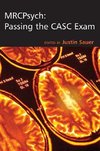
-
 Anglický jazyk
Anglický jazyk
Glial cells
Autor: Source: Wikipedia
Source: Wikipedia. Pages: 39. Chapters: Anti-MAG peripheral neuropathy, Astrocyte, Gitter cell, Glia limitans, Gliosis, Microglia, Neuroglia, NG2 glia, Olfactory ensheathing cells, Oligodendrocyte, Oligodendrocyte progenitor, Radial glial cell, Satellite... Viac o knihe
Na objednávku, dodanie 2-4 týždne
16.20 €
bežná cena: 18.00 €
O knihe
Source: Wikipedia. Pages: 39. Chapters: Anti-MAG peripheral neuropathy, Astrocyte, Gitter cell, Glia limitans, Gliosis, Microglia, Neuroglia, NG2 glia, Olfactory ensheathing cells, Oligodendrocyte, Oligodendrocyte progenitor, Radial glial cell, Satellite glial cell, Schwann cell. Excerpt: Microglia are a type of glial cell that are the resident macrophages of the brain and spinal cord, and thus act as the first and main form of active immune defense in the central nervous system (CNS). Microglia constitute 20% of the total glial cell population within the brain. Microglia (and astrocytes) are distributed in large non-overlapping regions throughout the brain and spinal cord. Microglia are constantly scavenging the CNS for plaques, damaged neurons and infectious agents. The brain and spinal cord are considered "immune privileged" organs in that they are separated from the rest of the body by a series of endothelial cells known as the blood-brain barrier, which prevents most infections from reaching the vulnerable nervous tissue. In the case where infectious agents are directly introduced to the brain or cross the blood-brain barrier, microglial cells must react quickly to decrease inflammation and destroy the infectious agents before they damage the sensitive neural tissue. Due to the unavailability of antibodies from the rest of the body (few antibodies are small enough to cross the blood brain barrier), microglia must be able to recognize foreign bodies, swallow them, and act as antigen-presenting cells activating T-cells. Since this process must be done quickly to prevent potentially fatal damage, microglia are extremely sensitive to even small pathological changes in the CNS. They achieve this sensitivity in part by having unique potassium channels that respond to even small changes in extracellular potassium. Microglial cells differentiate in the bone marrow from hematopoietic stem cells, the progenitors of all blood cells. During hematopoiesis, some of these stem cells differentiate into monocytes and travel from the bone marrow to the brain, where they settle and further differentiate into microglia. Monocytes can also differentiate into myeloid dendritic cells and macrophages in the peripheral systems. Like macrophages in the rest of the body,
- Vydavateľstvo: Books LLC, Reference Series
- Rok vydania: 2020
- Formát: Paperback
- Rozmer: 246 x 189 mm
- Jazyk: Anglický jazyk
- ISBN: 9781155205854












